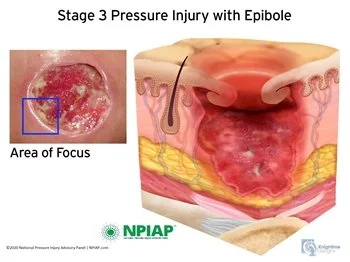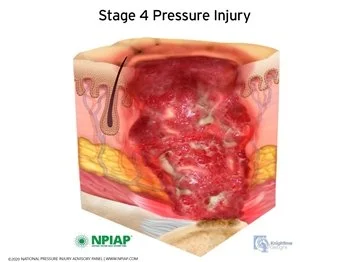Understanding Pressure Sores: Causes, Prevention, and Care
Pressure sores, also known as bedsores or pressure ulcers, are injuries to the skin and underlying tissue resulting from prolonged pressure on the skin. They often develop on areas of the body that are bony or have minimal padding, such as the hips, tailbone, heels, and elbows. These sores can range from mild redness to severe wounds penetrating the muscle and bone, posing serious health risks.
Causes of Pressure Sores
Pressure sores occur when blood flow to the skin is reduced or completely cut off due to continuous pressure. Factors that increase the likelihood of developing pressure sores include:
Immobility: Individuals confined to a bed or wheelchair for extended periods are at the highest risk.
Friction and Shear: Repeated rubbing or dragging of skin against a surface can damage skin layers.
Moisture: Prolonged sweat, urine, or feces exposure can weaken the skin’s barrier.
Poor Nutrition: Inadequate intake of nutrients, especially protein, vitamins, and minerals, can hinder skin repair and resilience.
Medical Conditions: Diabetes, vascular diseases, and other conditions that impair blood flow or sensation contribute to risk.
Common Sites for Pressure Sores
Pressure sores are more likely to form on parts of the body where bones are close to the skin’s surface, including:
Sacrum (lower back/tailbone)
Heels
Hips
Elbows
Shoulders
Back of the head
Stages of Pressure Sores
Pressure sores are categorized into four stages based on severity:
Stage 1
Reddened or discolored skin that does not blanch when pressed. The skin is intact, but there may be tenderness.
Stage 2
A shallow open sore or blister with partial skin loss. Surrounding tissue may be discolored or swollen.
Stage 3
A deep wound exposing fat tissue, with possible slough (yellowish dead tissue) present.
Stage 4
Extensive damage exposing muscle, bone, or tendons. These sores often show dead tissue and are at high risk for infection.
Prevention of Pressure Sores
Preventing pressure sores requires proactive measures, especially for individuals with limited mobility:
Frequent Position Changes: Regularly shift positions every 2 hours to alleviate pressure.
Supportive Surfaces: Use specialized cushions, mattresses, and pads to reduce pressure.
Good Hygiene: Keep skin clean and dry to prevent irritation and breakdown.
Healthy Nutrition: A balanced diet with adequate hydration supports skin health and repair.
Regular Skin Checks: Inspect vulnerable areas daily for redness, swelling, or early signs of sores.
Treatment of Pressure Sores
If a pressure sore develops, timely treatment is crucial to prevent complications:
Cleaning the Wound: Use mild solutions to cleanse the sore and remove debris.
Dressing Changes: Apply appropriate dressings to protect the wound and promote healing.
Reducing Pressure: Relieve pressure on the affected area using cushions or repositioning techniques.
Managing Infections: Antibiotics or antiseptic treatments may be necessary for infected sores.
Professional Care: Advanced stages may require surgical intervention or care from wound care specialists.
Seeking Legal Assistance for Negligent Care
In cases where pressure sores develop due to negligent care, it is important to understand your legal rights. Neglect in healthcare settings, such as hospitals or nursing homes, can lead to severe complications and long-term harm. Here’s how to seek legal assistance:
Document Evidence: Keep a detailed record of the pressure sore’s development, including photographs, medical records, and communication with caregivers.
Identify Negligence: Look for signs of neglect, such as unclean conditions, lack of repositioning, or inadequate wound care.
Consult an Attorney: Contact an experienced personal injury or medical malpractice attorney to discuss your case and potential compensation.
File a Claim: Work with your attorney to file a claim against the parties responsible to hold them accountable and seek justice.
Final Thoughts
Pressure sores are a preventable yet serious health concern, especially for individuals with limited mobility. Understanding the causes, prevention methods, and treatment options can make a significant difference in improving quality of life and reducing the risk of complications. Additionally, knowing when and how to seek legal assistance can empower individuals and families to address cases of neglect effectively. By prioritizing proactive care, early intervention, and awareness of legal resources, we can help those at risk maintain healthier skin and overall well-being.




